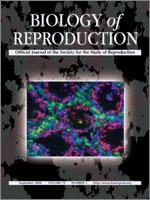During epididymal transit, sperm acquire the ability to initiate rapid forward progressive motility on release into the female reproductive tract or physiological media. Glycolysis is the primary source of the ATP necessary for this motility in the mouse, and several novel glycolytic enzymes have been identified that are localized to the principal piece region of the flagellum. One of these is the spermatogenic cell-specific type 1 hexokinase isozyme (HK1S), the only member of the hexokinase enzyme family detected in sperm. Hexokinase activity was found to be lower in immotile sperm immediately after removal from the cauda epididymis (quiescent) than in sperm incubated in physiological medium for 5 min and showing rapid forward progressive motility (activated). However, incubating sperm in medium containing diamide, an inhibitor of disulfide bond reduction, resulted in lower motility and HK activity than in controls. HK1S was present in dimer and monomer forms in extracts of quiescent sperm but mainly as a monomer in motile sperm. A dimer-size band detected in quiescent sperm with phosphotyrosine antibody was not detected in activated sperm, and the monomer-size band was enhanced. In addition, the general protein oxido-reductase thioredoxin-1 was able to catalyze the in vitro conversion of HK1S dimers to the monomeric form. These results strongly suggest that cleavage of disulfide bonds in HK1S dimers contributes to the increases in HK activity and motility that occur when mouse sperm become activated.
How to translate text using browser tools
1 September 2008
Cleavage of Disulfide Bonds in Mouse Spermatogenic Cell-Specific Type 1 Hexokinase Isozyme Is Associated with Increased Hexokinase Activity and Initiation of Sperm Motility
Noriko Nakamura,
Antonio Miranda-Vizuete,
Kiyoshi Miki,
Chisato Mori,
Edward M. Eddy
ACCESS THE FULL ARTICLE

Biology of Reproduction
Vol. 79 • No. 3
September 2008
Vol. 79 • No. 3
September 2008
disulfide bond reduction
epididymis
fibrous sheath
glycolysis
sperm
sperm activation
sperm capacitation




